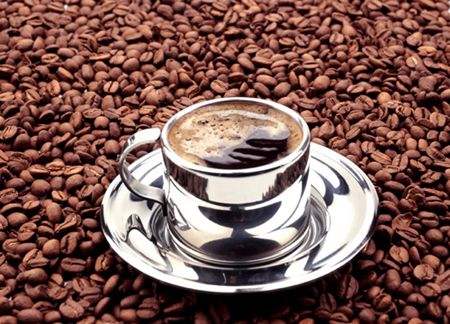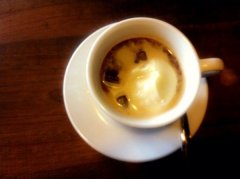Making Kilimanjaro coffee with the most African "wild" characteristics
Coffee gourmets often use words such as "wild" or "wild" to describe Kilimanjaro coffee, which has a unique cocoa aroma and strong glycol. This kind of method. The espresso machine can extract several cups of coffee successively. The oil and gum in the coffee beans can be emulsified and dissolved under high pressure during the brewing process, and the essence of the beans is completely extracted by pressure, making the brewed coffee stronger, better in taste and flavor.

Mixed preparation:
First: choose good quality coffee beans, because the use of poor quality coffee beans, of course, will greatly damage the flavor of coffee, even if the production of a very balanced single coffee, but also can not make delicious coffee, the choice of good quality coffee beans is the biggest point.
Second: get rid of defective beans, mixed with defective beans, the taste will become worse. Therefore, it is better to be missing than rotten to get rid of the defective beans without stinginess. For example, long worms with holes, abnormal development, shell without benevolence, will be picked out.
Third: understand the characteristics of coffee beans, if the individual characteristics of the coffee beans to be blended are not well understood, it is difficult to mix good or desired coffee, such as mocha coffee is more sour, it can not be used to dilute the sour taste of coffee.
Fourth: understand the different degree of roasting, different coffee beans are roasted differently, their flavor is also different, so we should have a good grasp, such as Kilimanjaro, Blue Mountain is generally medium-shallow baking, carbon roasting is deep baking and so on.
Making fancy coffee: there are many kinds of fancy coffee. Take Japanese cappuccino as an example.
First, make Kilimanjaro coffee beans into hot coffee.
2. Pour hot water into the coffee cup, warm the coffee cup for 20-30 seconds, then dry.
3. Put the fine sugar in the coffee cup. Pour in the hot coffee without stirring.
4. Cover the coffee surface with whipped cream from the edge of the cup to the center of the cup. To cause to show a spiral pattern.
5. Sprinkle cinnamon powder and lemon peel crumbs and serve.
Select
"fresh" is the most important factor in buying Kilimanjaro coffee beans. There are several steps to judge whether the beans are fresh or not.
1. Grab a handful of coffee beans and feel whether they are solid beans with the palm of your hand.
2. Whether it is enough to smell the aroma close to the nose.
3. Put a bean into your mouth and bite it twice. There is a clear sound indicating that the bean is well preserved and not damp.
If you want to buy a single Kilimanjaro coffee bean, grab a handful in the palm of your hand, in addition to the above judgment, but also look at whether the color, grain size and shape of each bean are similar, so as not to buy mixed beans. If you buy mixed beans, it is normal to have different colors, grain sizes and shapes.
Composition
Raw beans: raw beans are unbaked beans, which contain 11.5% fat; 11.5% moisture; 28.6% crude fiber; 4.0% minerals; 6.2% tannic acid; 1.3% caffeine; 17.0% essence; 8.1% sugar; 11.8% protein.
Baked beans: baked beans, which contain 13.0% fat; 1.5% caffeine; 29.5% crude fiber; 2.6% moisture; 5.0% minerals; 4.2% tannic acid; 29.4% essence; 2.0% sugar; 12.8% protein.
Product evaluation standard
Taste-smooth, rough, etc.
Particles-too light, too heavy, etc.
Acidity-slightly sour, over-acidic in the upper part, etc.
Freshness-- from old to fresh
Defects-acidic, grassy, moldy, etc.
Coffee cups-fiber baked, washed, burned, old cups, etc.
Overall assessment-peaceful, rich, bitter, etc.
Fragrance-- from weak to strong
Fullness-not full enough to be quite full
Important Notice :
前街咖啡 FrontStreet Coffee has moved to new addredd:
FrontStreet Coffee Address: 315,Donghua East Road,GuangZhou
Tel:020 38364473
- Prev

It's easy to make this summer's hot coffee in the cafe, Afakito.
A popular new flavor has come out of a Baba's house this summer. Study it. Is it too easy? A small corner of the house, covered with a small tablecloth, two plates of snacks, a book or a play, is so enjoyable, and it doesn't have the noise of a cafe. I still want to thank some Baba for providing me with ideas. My friends, come to my house and feel free to order. Any taste can be satisfied. Alfaqido originated from
- Next

Spanish Coffee with perfect combination of Honey and Coffee
In the quiet afternoon, sitting in a quiet corner, sipping Spanish coffee, dreaming of one day coming to Spain to enjoy its rich amorous feelings and culture. Spain is one of the most enthusiastic countries in the world. The Spaniards have the fanaticism of a bull and the calmness of a matador. They like the hot drinks of honey products, as well as the bitter taste of coffee. In Valencia, Spain.
Related
- Beginners will see the "Coffee pull flower" guide!
- What is the difference between ice blog purified milk and ordinary milk coffee?
- Why is the Philippines the largest producer of crops in Liberia?
- For coffee extraction, should the fine powder be retained?
- How does extracted espresso fill pressed powder? How much strength does it take to press the powder?
- How to make jasmine cold extract coffee? Is the jasmine + latte good?
- Will this little toy really make the coffee taste better? How does Lily Drip affect coffee extraction?
- Will the action of slapping the filter cup also affect coffee extraction?
- What's the difference between powder-to-water ratio and powder-to-liquid ratio?
- What is the Ethiopian local species? What does it have to do with Heirloom native species?

